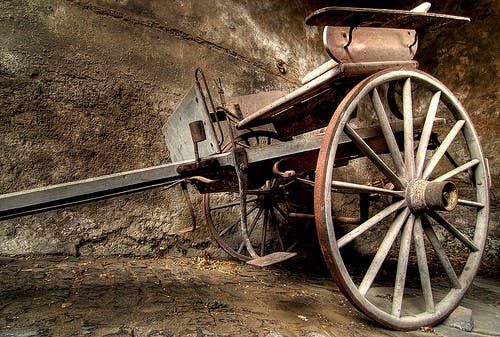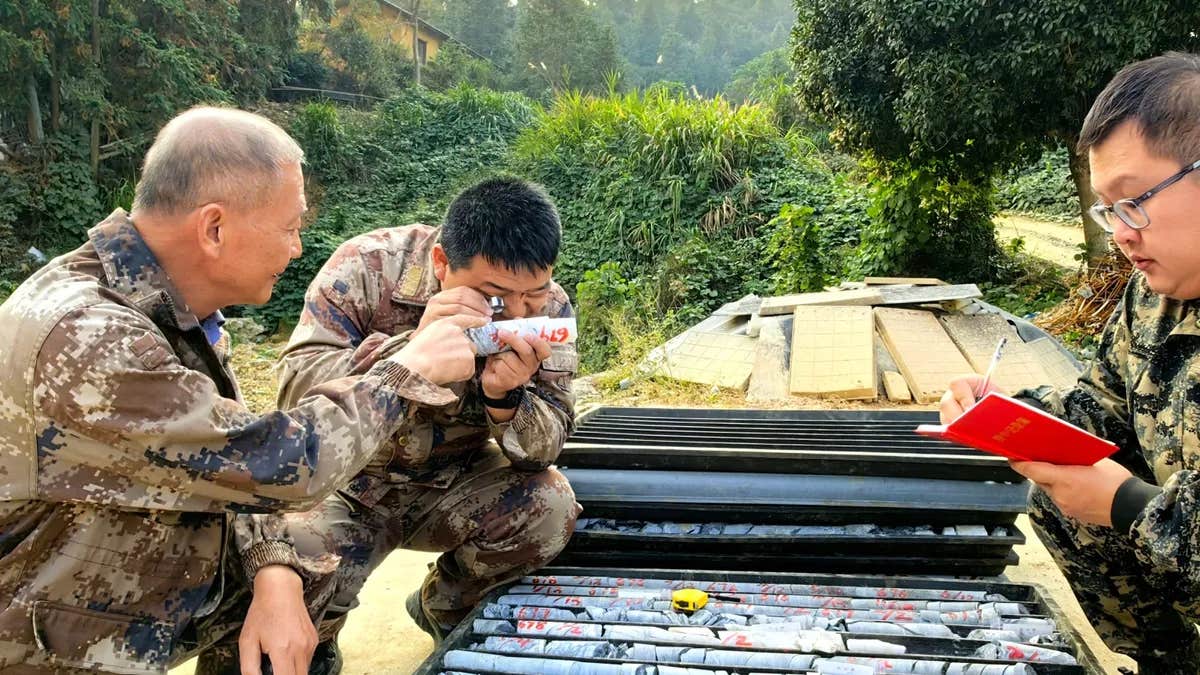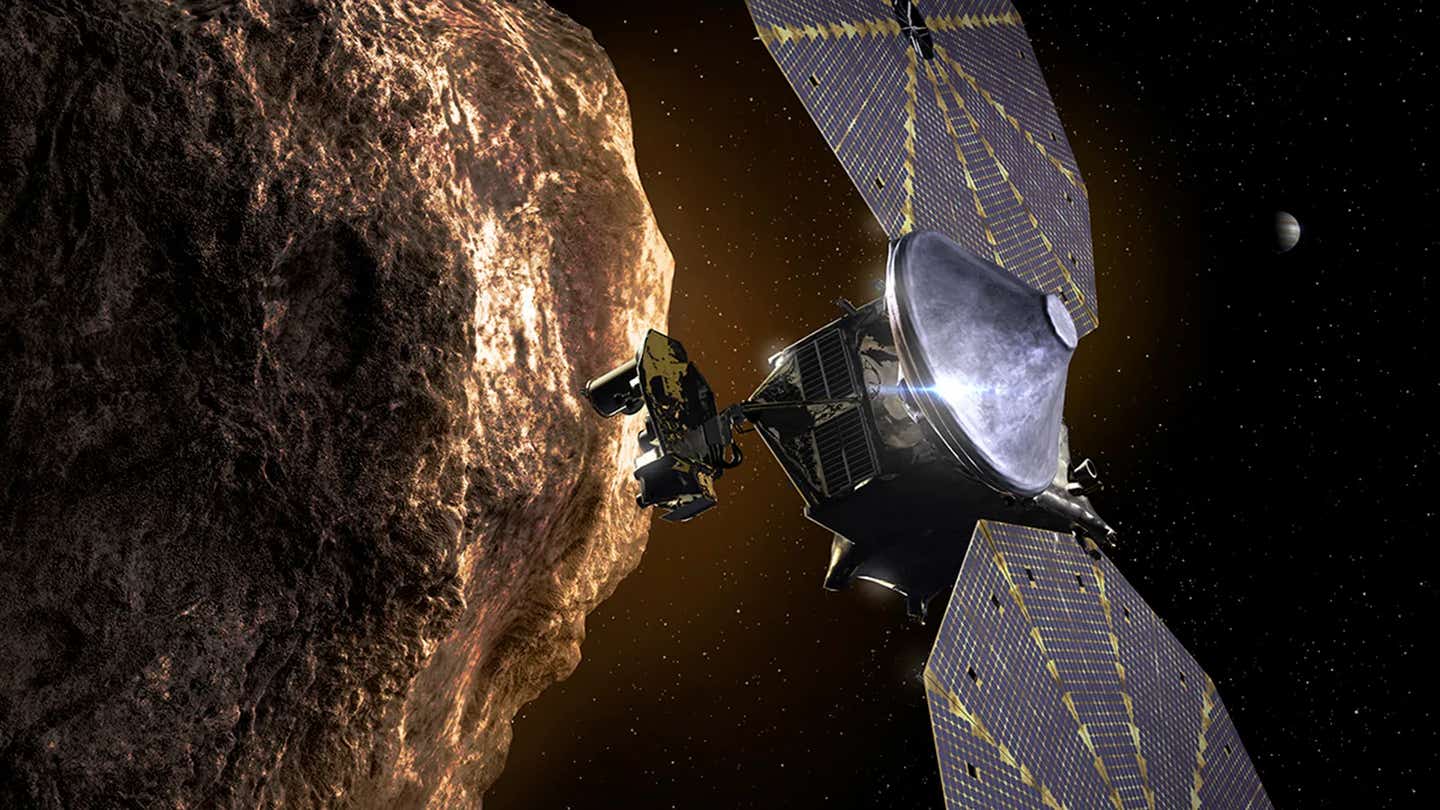Scientists may have finally discovered the origin of the wheel
The story of the wheel’s invention is an ancient mystery shrouded in speculation and scattered clues, yet its impact on human civilization is undeniable.

Despite its significance, scholars have struggled to pinpoint where, when, and how this revolutionary device first emerged. (CREDIT: CC BY-SA 3.0)
The story of the wheel's invention is an ancient mystery shrouded in speculation and scattered clues, yet its impact on human civilization is undeniable. Despite its significance, scholars have struggled to pinpoint where, when, and how this revolutionary device first emerged.
Traditional theories often point to the potter's wheel in Mesopotamia around 4000 BCE or suggest that it began in northern Turkey. However, a newer hypothesis suggests that the wheel's origins may lie deep within the Carpathian Mountains, where ancient miners working with copper might have sparked its development.
Richard Buillet, a Columbia University professor, presented this theory in his book The Wheel: Inventions and Reinventions. He proposed that copper miners in the Carpathian Mountains, who needed to transport heavy loads of ore, created the first wheels.
In recent studies, Buillet and colleagues from the University of Illinois Urbana-Champaign and Georgia Tech used computational models to examine the environmental conditions that could have led to the development of wheel-and-axle technology. The findings, published in Royal Society Open Science, suggest that the unique setting of narrow and constrained mining tunnels played a crucial role.
The study proposes that miners initially relied on rollers—logs stripped of limbs—to move ore. As they refined the technique, they added grooves to the rollers to prevent cargo from slipping. These grooves eventually led to a primitive wheel-and-axle system called a "wheelset." Over approximately 500 years, the technology evolved, adding features to the axle that allowed independent wheels.
Related Stories
The study emphasizes that this development wasn’t a sudden invention but a gradual refinement driven by environmental challenges. As the researchers noted, “The unique features of the mine environment accentuated the advantages of the wheelset over its predecessor while negating its most significant disadvantage: the inability to turn.”
Design science and computational mechanics helped the researchers recreate the potential evolutionary path of the wheel. These tools allow scientists to simulate how a simple device like a roller could incrementally transform into a complex wheel-and-axle system.
This approach also highlights the role of trial, error, and adaptation in technological progress. The study’s findings challenge the notion of a singular inventor, supporting the idea that the wheel evolved over centuries across a broad area rather than being a sudden stroke of genius.
By simulating ancient tools, researchers were able to see how environmental conditions influenced design choices. For example, the narrow confines of mining tunnels made the rolling motion of simple rollers impractical for transporting heavy ore. The limitations of the space forced miners to adapt, and the grooves in the rollers allowed them to secure their loads more effectively.
As these grooves deepened and merged into a central channel, the axle concept emerged. This mechanical shift allowed for greater control and mechanical advantage—reducing the force needed to push the cart with each iteration of the design. Over time, this central axle became a key element of early wheeled devices.
The researchers used a physics-based computational model to replicate the mechanics of the wheel’s evolution. They examined stress distribution and elastic responses to better understand the performance of early designs. By comparing these computer-generated models with ancient artifacts, they could identify why certain features, like grooves in rollers, were advantageous. This type of analysis fills gaps left by traditional archaeological methods, offering insights into ancient engineering without direct physical evidence.
The evolutionary path outlined in the study started with the development of grooved rollers, eventually leading to a monolithic wheel-and-axle structure where wheels were fixed to the axle, known as a wheelset. This design was functional for moving heavy loads over relatively straight paths, which was suitable for the mining environment.
Over time, the technology advanced to multi-body wheel-and-axle systems, allowing wheels to rotate independently—making them more adaptable and durable. The study highlights that the challenges posed by early wheelsets, such as increased friction during turns and higher stress at the wheel-axle junction, likely pushed miners toward refining the design.
Historical evidence supports the theory that mining activities may have inspired the wheel’s development. Archaeologists have discovered more than 150 clay models of four-wheeled wagons in the Carpathian region, dating back to 3600 BCE.
These clay models, likely used as drinking mugs, resemble small wheeled baskets—suggesting a connection to the mining culture. These artifacts feature wheelsets rather than wheels turning independently, which aligns with the straight and level paths of a mine rather than the irregular terrain of open fields.
Further reinforcing this theory is the fact that the Boleráz culture, known for creating these models, emerged during the Copper Age in the Carpathians. At that time, copper mining was a vital activity, and the tools required to transport heavy ore loads may have driven the invention of early wheeled carts. The mining context could explain why wheeled technology spread rapidly beyond the mines, adapting to agricultural and trade uses in surrounding regions.
Rollers as a transportation method were not unique to the Carpathian region. Historical records document the use of roller-based systems for moving heavy loads across cultures and continents. From pre-colonial Fiji to ancient Assyria, similar techniques were employed, suggesting that the concept of the roller was a widespread and practical solution for moving large objects. Experimental archaeology has even recreated these ancient methods, confirming the viability of rollers for transporting heavy loads with relatively simple tools.
However, within the confined space of mines, free rollers were limited. The need to constantly reposition rollers along narrow paths proved inefficient. Miners innovated by securing rollers within sockets at the base of their carts, creating a form of unilateral rolling—where only one side of the roller would move against the cart. This method allowed cargo to span the full width of the tunnel without repeated manual adjustments. It also reduced the need to construct wide pathways, conserving labor.
This adaptation from free to grooved rollers marked a key phase in the development of the wheel. It also highlighted a crucial advantage: reducing friction where it mattered most. By relocating the friction surface to the cart itself, miners could process and lubricate it to make it more efficient. These incremental innovations—often responding to the specific challenges of mining—laid the foundation for what would become one of humanity’s most transformative technologies.
Ultimately, the evidence from the Carpathian mines aligns with the evolution of early wheeled technology. The artifacts, computational models, and historical context suggest that ancient copper miners, faced with the challenges of transporting heavy ore through narrow tunnels, played a pivotal role in the creation of the first wheels. Their innovations spread, reshaping human society far beyond the confines of the mines and paving the way for the wheels that would eventually transform agriculture, trade, and travel.
Note: Materials provided above by The Brighter Side of News. Content may be edited for style and length.
Like these kind of feel good stories? Get The Brighter Side of News' newsletter.
Joshua Shavit
Science & Technology Writer | AI and Robotics Reporter
Joshua Shavit is a Los Angeles-based science and technology writer with a passion for exploring the breakthroughs shaping the future. As a contributor to The Brighter Side of News, he focuses on positive and transformative advancements in AI, technology, physics, engineering, robotics and space science. Joshua is currently working towards a Bachelor of Science in Business Administration at the University of California, Berkeley. He combines his academic background with a talent for storytelling, making complex scientific discoveries engaging and accessible. His work highlights the innovators behind the ideas, bringing readers closer to the people driving progress.



